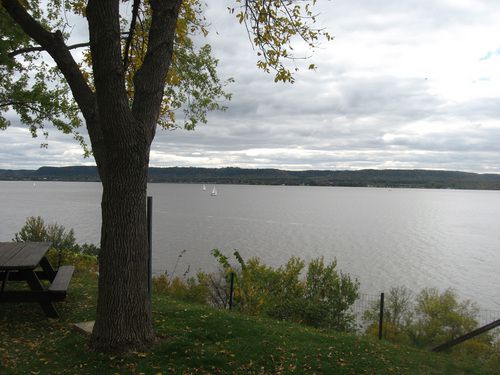When we first moved to Minnesota many years ago, we were naturally aware that there are a lot of lakes here — 10,000 of them, rumor has it. We also came to understand that many of those “lakes” are actually ponds.
Still, we we’re shocked — shocked — to read today in the Rochester Post Bulletin that one of our favorite spots in all of Minnesota (which we visited this weekend) is not a lake at all:
Lake Pepin really isn’t a lake, not in the Minnesota sense. Instead, it’s a reservoir of the Mississippi River formed when sand pouring down the Chippewa River from the heart of Wisconsin blocked the river at what is now Reads Landing. It’s the widest spot on the Mississippi River, except when it floods. Pepin was once much longer, stretching up to what is now the Twin Cities. But over the millenia, it has been slowly filling in. Such lakes are very rare worldwide.
“Not in the Minnesota sense?” What does that mean? Lake Pepin isn’t good enough for you and your 10,000 close friends, Minnesota?
Check ye olde Encyclopedia Britannica:
It may be said, however, that rivers and streams are relatively fast moving; marshes and swamps contain relatively large quantities of grasses, trees, or shrubs; and ponds are relatively small in comparison with lakes. Geologically defined, lakes are temporary bodies of water.
Not being from Minnesota, I’m unqualified — as is Encyclopedia Britannica — to bring a Minnesota sensibility to this question. Over to you, native Minnesotans.

